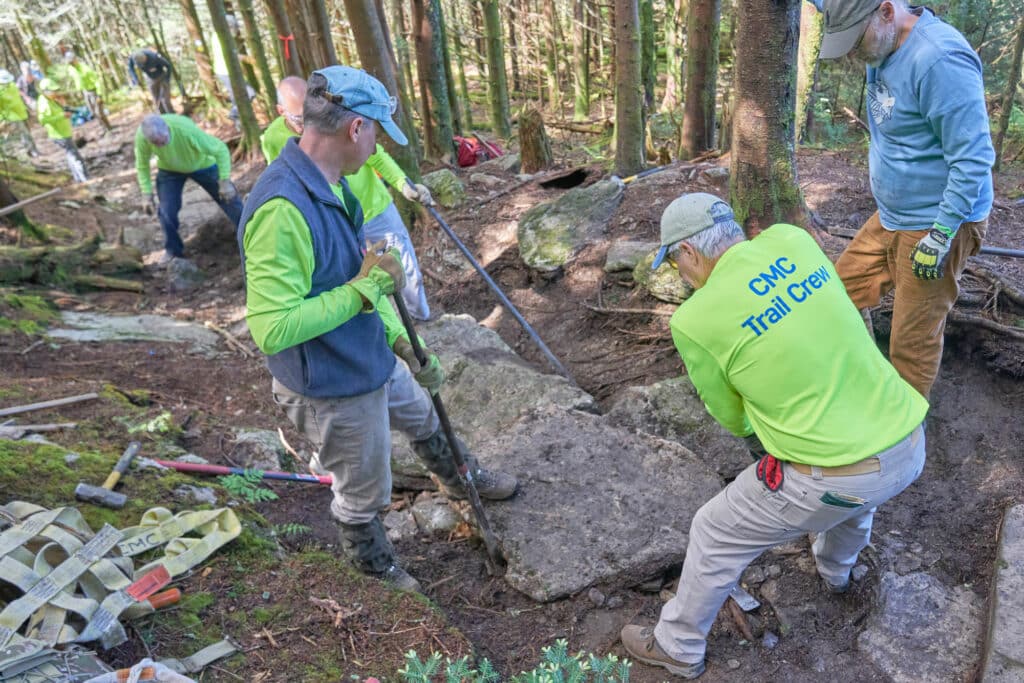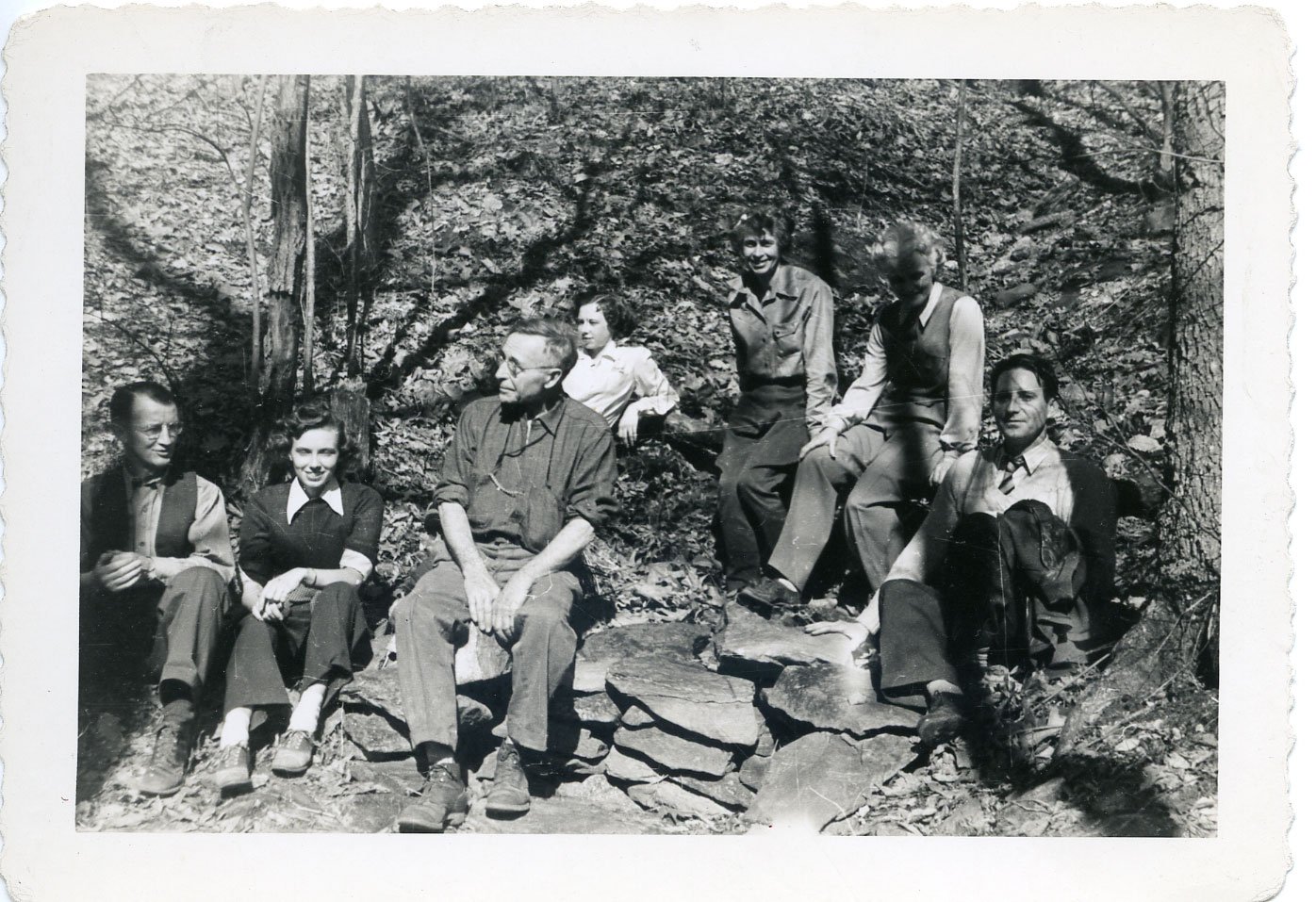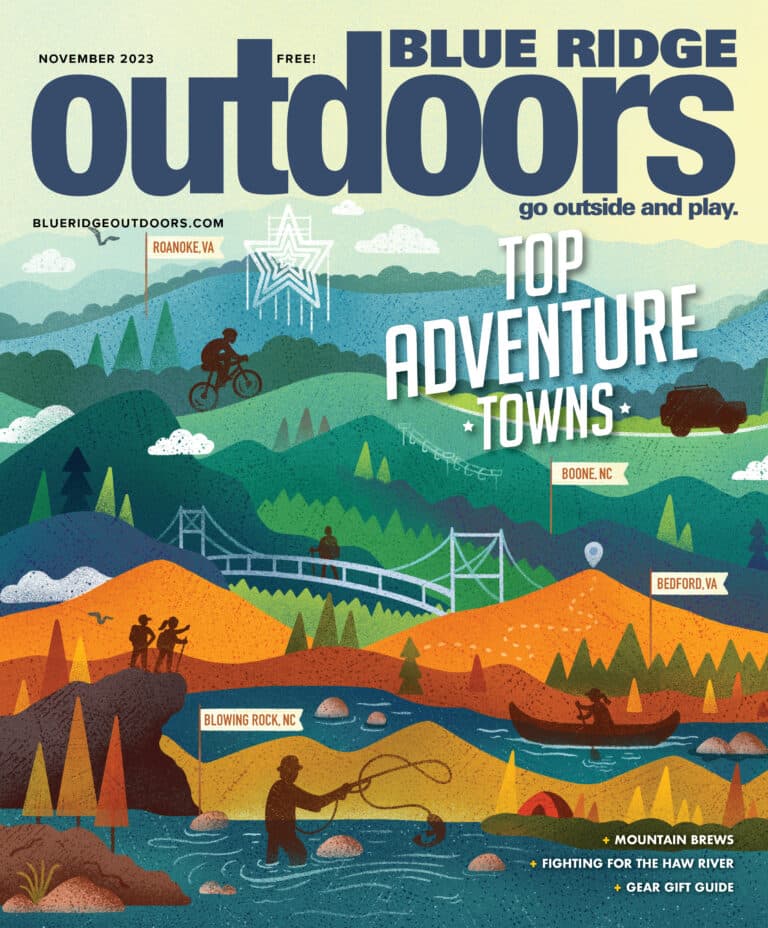A Long Path Traveled
Adventure in the Blue Ridge Mountains looked a lot different 100 years ago. The Appalachian Trail had barely been proposed; the Mountains-to-Sea Trail wasn’t even a gleam in North Carolina’s eye. The most advanced gear, as noted in a contemporary hike announcement, was “stout shoes and heavy wool socks.”
Yet while a time traveler from 1923 might be baffled by today’s Bluetooth speakers and carbon-fiber trekking poles, one element of the region’s outdoor scene would be comfortingly familiar. The Carolina Mountain Club would be there to offer friendly advice and expert guidance on the trails of the Tar Heel State.
The South’s largest hiking and trail maintenance organization turns 100 this year, and the centenary will be celebrated on Sunday, July 16, with a free birthday party at the N.C. Arboretum in Asheville. The event will feature live music, food trucks, ice cream, and guided hikes, a tradition that Danny Bernstein says stretches back to the club’s earliest days.

Bernstein, a longtime hike leader with the CMC, recently released Carolina Mountain Club: One Hundred Years, an extensive survey of the club’s history. She says some of the group’s very first newletters outline the highly organized system of trail scouting and leadership still used by contemporary CMC guides.
Such rigor had been encouraged by the club’s founders, who had come to Asheville from Boston in 1919 to create a Southern chapter of the Appalachian Mountain Club. (Another legacy of its Northeast origin, Bernstein says, is the CMC’s embrace of female members, from early hike leader Barbara Ambler to recent president Barbara Morgan.) Local organizers kept those traditions when they struck out as an independent group in 1923.
From the start, Bernstein says, the CMC worked to make hiking more accessible. “We have all these great things, like Mount Mitchell, the highest mountain east of the Mississippi,” she says of the founders’ attitudes. “But nobody knows about them, and nobody knows how to get there!”
On the logistical side, the CMC established a robust carpooling system to tackle the winding, often unpaved roads into the wild. Before public lands like Great Smoky Mountains National Park and the Blue Ridge Parkway had been fully fleshed out, the group arranged access to private trails. And thanks to member George Masa, a Japanese photographer and mountaineer who had settled in Asheville, the club offered some of the first trail maps of the Smokies in 1932.
Not content just to hike on existing paths, the CMC became instrumental in building out the region’s trail network as well. The group helped blaze the Appalachian Trail’s North Carolina section in the 1920s and ’30s; it established the Art Loeb Trail, named after an avid CMC member, through the Shining Rock Wilderness in the 1960s; and it led efforts to build the western portion of the Mountains-to-Sea Trail from the 1980s onward.
That work continues today, says current CMC president Tom Weaver. The club’s roughly 1,000 members maintain all trails along the Blue Ridge Parkway from Cherokee to the eastern edge of Buncombe County, as well as hundreds of trail miles throughout western North Carolina’s national forests. Beyond the upkeep work of clearing vegetation and diverting water from paths, the club continues to relocate sections of the Applachian and Mountains-to-Sea trails so they follow more sustainable routes.
Weaver says the CMC’s volunteer trail crews are more robust than ever, with the pandemic providing a substantial boost. With much of the commercial world closed, more people were out hiking, and the club had more chances to recruit fresh arms.
“We always say about the rewards of trail maintenance that it’s fresh air, it’s exercise, and it’s building or maintaining trails that your grandchildren will walk on someday,” Weaver says. He’s launched a “Centennial Challenge” to help bring in even more volunteers, with people qualifying for a special patch if they hike 50 miles and put in 50 hours of maintenance work. He also established an endowment fund to support training and provide tools for trail maintainers.
In some ways, CMC has shifted with the times. The club has developed a free online database of regional trail routes to complement its ongoing guided hikes; its leaders now download GPS coordinates to supplement the printed maps Masa and others relied on in the early days.
But at its core, says Bernstein, the club remains true to the path of celebrating nature and cameraderie that it started walking 100 years ago. “It’s a place to learn about the land in a very comfortable way,” she says. “If you go on a hike with us, you’ve got a whole bunch of people who will soon be your friends.”
More information about the Carolina Mountain Club birthday celebration is available at CMC100th.org. Carolina Mountain Club: One Hundred Years is available online through the Friends of the Mountains-To-Sea Trail or at Asheville-area retail locations including Malaprop’s Bookstore/Cafe and Mast General Store.
Cover photo: A group of early Carolina Mountain Club hikers are led by Dr. Gaillard S. Tennent (third from left), the Carolina Mountain Club’s first president and namesake of Tennent Mountain in the Pisgah National Forest. Photo courtesy of the Carolina Mountain Club Archive, D.H. Ramsey Library, Special Collections, University of North Carolina Asheville








